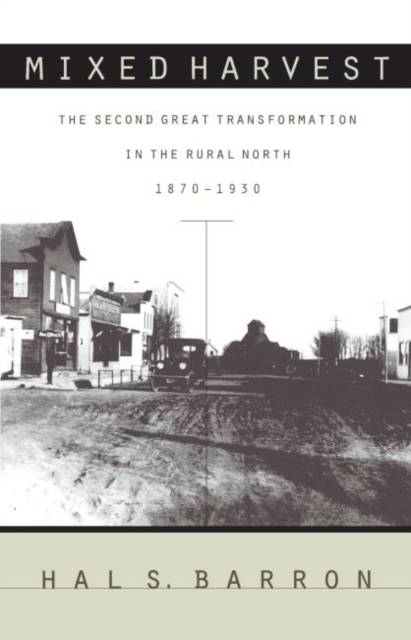
- Afhalen na 1 uur in een winkel met voorraad
- Gratis thuislevering in België vanaf € 30
- Ruim aanbod met 7 miljoen producten
- Afhalen na 1 uur in een winkel met voorraad
- Gratis thuislevering in België vanaf € 30
- Ruim aanbod met 7 miljoen producten
Zoeken
€ 64,45
+ 128 punten
Omschrijving
Mixed Harvest explores rural responses to the transformation of the northern United States from an agricultural society into an urban and industrial one. According to Hal S. Barron, country people from New England to North Dakota negotiated the rise of large-scale organizational society and consumer culture in ways marked by both resistance and accommodation, change and continuity. Between 1870 and 1930, communities in the rural North faced a number of challenges. Reformers and professionals sought to centralize authority and diminish local control over such important aspects of rural society as schools and roads; large-scale business corporations wielded increasing market power, to the detriment of independent family farmers; and an encroaching urban-based consumer culture threatened rural beliefs in the primacy of their local communities and the superiority of country life. But, Barron argues, by reconfiguring traditional rural values of localism, independence, republicanism, and agrarian fundamentalism, country people successfully created a distinct rural subculture. Consequently, agrarian society continued to provide a counterpoint to the dominant trends in American society well into the twentieth century.
Specificaties
Betrokkenen
- Auteur(s):
- Uitgeverij:
Inhoud
- Aantal bladzijden:
- 320
- Taal:
- Engels
- Reeks:
Eigenschappen
- Productcode (EAN):
- 9780807846599
- Verschijningsdatum:
- 27/10/1997
- Uitvoering:
- Paperback
- Formaat:
- Trade paperback (VS)
- Afmetingen:
- 157 mm x 235 mm
- Gewicht:
- 535 g

Alleen bij Standaard Boekhandel
+ 128 punten op je klantenkaart van Standaard Boekhandel
Beoordelingen
We publiceren alleen reviews die voldoen aan de voorwaarden voor reviews. Bekijk onze voorwaarden voor reviews.











